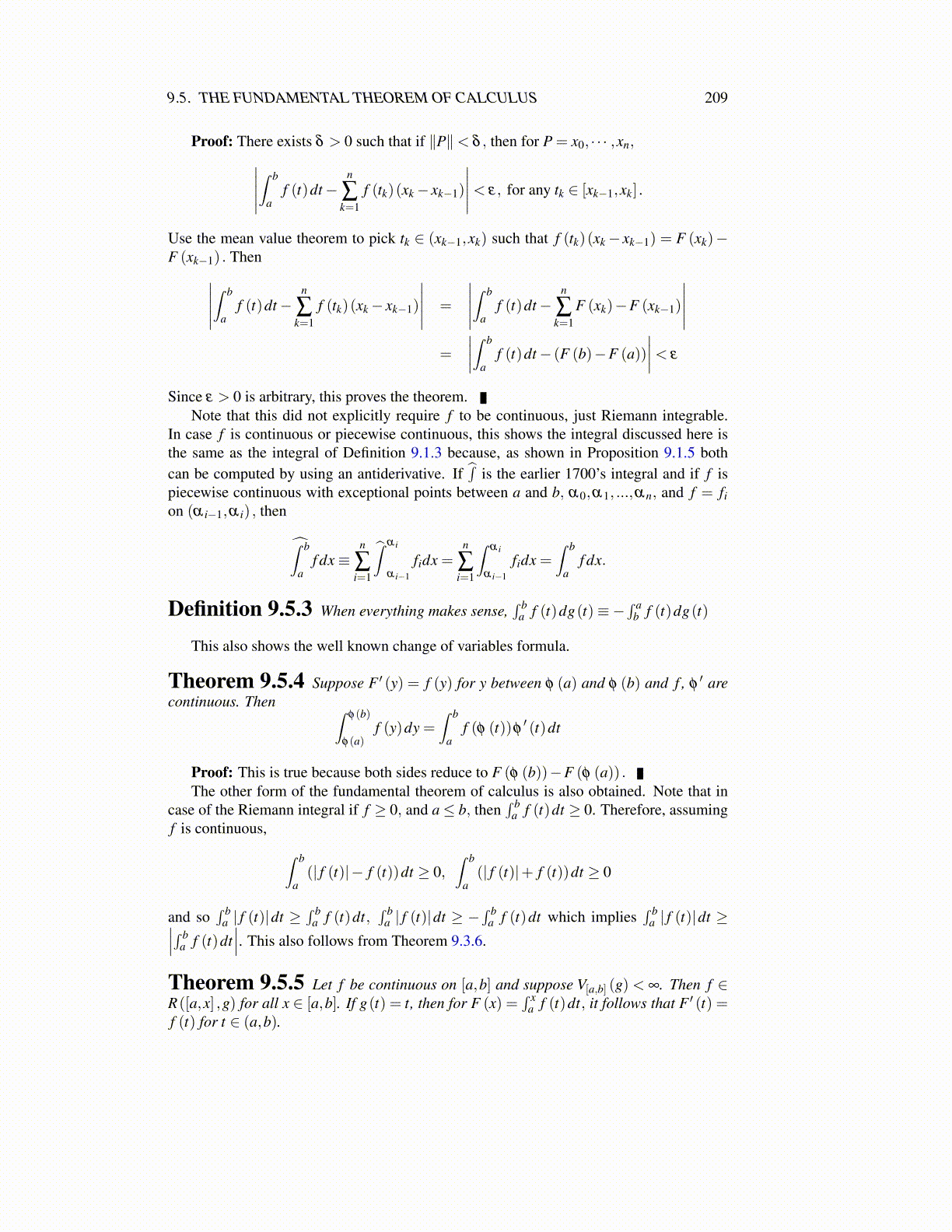
9.7. A SIMPLE PROCEDURE FOR FINDING INTEGRALS 209
a = x0 < x1 < · · ·< xn = b which have the property that on [xi,xi+1] , the following functionis differentiable and has a continuous derivative.
Gi (x)≡
F (x) on (xi,xi+1)F (xi+) when x = xiF (xi+1−) when x = xi+1
Also assume F (a) = F (a+) ,F (b) = F (b−). Then∫ b
af (x)dF =
n−1
∑j=0
∫ x j+1
x j
f (x)G′j (x)dx+n−1
∑i=1
f (xi)(F (xi+)−F (xi−))
Here is why this procedure works. Let δ be very small and consider the partition
a = x0 < x1−δ < x1 < x1 +δ < x2−δ < x2 < x2 +δ <
· · ·xn−1−δ < xn−1 < xn−1 +δ < xn−δ < xn = b
where δ is also small enough that whenever |x− y|< δ , it follows | f (x)− f (y)|< ε. Thenfrom the properties of the integral presented above,∫ x1−δ
af dF +
∫ x2−δ
x1+δ
f dF + · · ·+∫ b
xn−1+δ
f dF +n−1
∑i=1
( f (xi)− ε)(F (xi +δ )−F (xi−δ ))
≤∫ b
af dF ≤
∫ x1−δ
af dF +
∫ x2−δ
x1+δ
f dF + · · ·+∫ b
xn−1+δ
f dF
+n−1
∑i=1
( f (xi)+ ε)(F (xi +δ )−F (xi−δ ))
By Lemma 9.4.3 this implies∫ x1−δ
af G′0dx+
∫ x2−δ
x1+δ
f G′1dx+ · · ·+∫ b
xn−1+δ
f G′n−1dx
+n−1
∑i=1
( f (xi)− ε)(F (xi +δ )−F (xi−δ ))≤∫ b
af dF ≤
∫ x1−δ
af G′0dx+
∫ x2−δ
x1+δ
f G′1dx+ · · ·+∫ b
xn−1+δ
f G′n−1dx
+n−1
∑i=1
( f (xi)+ ε)(F (xi +δ )−F (xi−δ ))
Now let δ → 0 to obtain the desired integral is between
n−1
∑j=0
∫ x j+1
x j
f (x)G′j (x)dx+n−1
∑i=1
( f (xi)+ ε)(F (xi+)−F (xi−))
andn−1
∑j=0
∫ x j+1
x j
f (x)G′j (x)dx+n−1
∑i=1
( f (xi)− ε)(F (xi+)−F (xi−))
Since ε is arbitrary, this shows the procedure is valid. This yields the following right away.